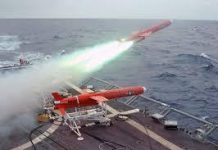
Denmark’s government has concluded that acquiring long-range strike capabilities is necessary to bolster both its own deterrence and NATO’s collective posture, following advice from Chief of Defence Gen. Michael Hyldgaard. Defence Minister Troels Lund Poulsen announced Wednesday that the armed forces will now evaluate how to procure and integrate long-range precision systems into the military.
This policy decision builds on an earlier plan this month to invest roughly 58 billion kroner (about US$9.2 billion) in eight medium- and long-range air-defense systems. The move to pursue long-range strike options comes as many European defence leaders accept that point defenses alone are unlikely to protect cities from concentrated missile and drone attacks — a tactic Russia has used in Ukraine to saturate air defenses. Under this logic, being able to neutralize adversary launch platforms at distance is critical.
Lund Poulsen said the capability will complement Denmark’s ground-based air defenses and enhance the country’s capacity not only to repel aerial threats but also to engage hostile assets far from Danish territory.
The Defence Ministry noted that Ukraine’s experience highlights the need for layered air defenses that both intercept threats in the air and pre-emptively defeat hostile systems on enemy soil, including missile launchers. Foreign Minister Lars Løkke Rasmussen added that NATO has requested such long-range precision weapons and that Denmark aims to acquire them to deter aggression and avoid situations that would require their use. He said the Danish contribution will support Europe’s goal of being able to defend itself by 2030.
The Defence Ministry’s Acquisition and Logistics Organisation has been tasked to survey the market and identify the systems that best meet Denmark’s needs. Potential options include Tomahawk cruise missiles for the Iver Huitfeldt-class frigates or long-range stand-off munitions compatible with Denmark’s F-35 fleet, such as the JASSM-ER.
Industry developments include MBDA’s promotion of a land-launched variant of its naval cruise missile and the unveiling at DSEI of Crossbow, a lower-cost effector with a reported range beyond 800 kilometers that the company hopes to scale into production by mid-2026. Meanwhile, France, Germany, Italy and Poland are cooperating on a European Long-Range Strike initiative, though its schedule is not yet defined. A German-British agreement reached in July to develop a “deep precision strike” system with a range exceeding 2,000 kilometers as part of ELSA is projected to deliver a capability within about a decade.




